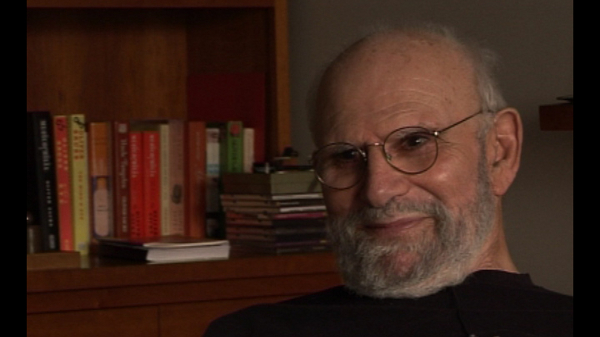NEXT STORY

Is it possible for actors to play people with neurological disorders?
RELATED STORIES

NEXT STORY

Is it possible for actors to play people with neurological disorders?
RELATED STORIES


|
Views | Duration | |
|---|---|---|---|
| 171. My sneeze that cost $10k | 1 | 368 | 00:47 |
| 172. De Niro visits the post-encephalitic patients | 521 | 03:00 | |
| 173. My satisfaction at the Awakenings film | 386 | 02:02 | |
| 174. Playing myself in a radio play of Awakenings | 235 | 01:21 | |
| 175. Pinter, the creative process and refusing a play | 318 | 03:42 | |
| 176. Judi Dench's portrayal in A Kind of Alaska | 516 | 01:22 | |
| 177. Tom Conti's quadriplegic in Whose Life is it Anyway? | 268 | 01:23 | |
| 178. Is it possible for actors to play people with neurological... | 238 | 05:37 | |
| 179. A 60-page plagiarism of Migraine | 269 | 01:17 | |
| 180. An opera based on The Twins | 197 | 04:26 |


I went to see Whose Life is it Anyway? about a... a sculptor who was rendered quadriplegic and finally, I think, commits suicide or intends to commit suicide. I thought that the representation of the quadriplegic man was incredible and I went up to Tom Conti afterwards and I asked him if he'd had much to do with quadriplegic people. He said, yes, he said he'd been out to Roosevelt Island to a place, which existed then, where all people with quadriplegia, either from high neck injuries or who had had polio and were paralysed up to the neck, they were called ‘the heads’, these were people with no bodies, and he said half of them wanted to commit suicide, but couldn't. But also, he... he had watched them very closely and he would spend hours every day imagining he was quadriplegic. He had rather long hair at the time, and one of his ways of dealing with hair which fell into his eyes was to direct... blow up, blow a lock of hair out of his own eyes. And so I'm sure there that his close observation of the patients was crucial.
Oliver Sacks (1933-2015) was born in England. Having obtained his medical degree at Oxford University, he moved to the USA. There he worked as a consultant neurologist at Beth Abraham Hospital where in 1966, he encountered a group of survivors of the global sleepy sickness of 1916-1927. Sacks treated these patients with the then-experimental drug L-Dopa producing astounding results which he described in his book Awakenings. Further cases of neurological disorders were described by Sacks with exceptional sympathy in another major book entitled The Man Who Mistook His Wife For A Hat which became an instant best seller on its publication in 1985. His other books drew on his rich experiences as a neurologist gleaned over almost five decades of professional practice. Sacks's work was recognized by prestigious institutions which awarded him numerous honours and prizes. These included the Lewis Thomas Prize given by Rockefeller University, which recognizes the scientist as poet. He was an honorary fellow of both the American Academy of Arts and Letters and the American Academy of Arts and Sciences, and held honorary degrees from many universities, including Oxford, the Karolinska Institute, Georgetown, Bard, Gallaudet, Tufts, and the Catholic University of Peru.
Title: Tom Conti's quadriplegic in "Whose Life is it Anyway?"
Listeners: Kate Edgar
Kate Edgar, previously Managing Editor at the Summit Books division of Simon and Schuster, began working with Oliver Sacks in 1983. She has served as editor and researcher on all of his books, and has been closely involved with various films and adaptations based on his work. As friend, assistant, and collaborator, she has accompanied Dr Sacks on many adventures around the world, clinical and otherwise.
Tags: Whose Life is it Anyway?, Roosevelt Island, Tom Conti
Duration: 1 minute, 23 seconds
Date story recorded: September 2011
Date story went live: 02 October 2012